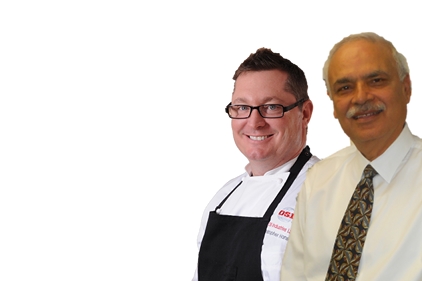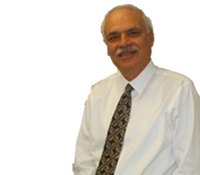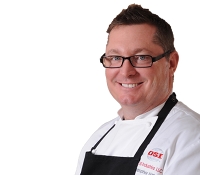|
Meet... Dr. B.K. Girdhar Vice President, Product Development, OSI Group LLC Education: Ph.D., Food Science & Nutrition, Ohio State University (1977), Executive MBA, Northern Illinois University (1991) Experience: Dr. Girdhar served as director of R&D and quality assurance at L. Karp & Sons, an Elk Grove Village, Ill., frozen bakery foods company, from 1988 to 1994. In 1994, he joined OSI Group as vice president of product development. Associations: Institute of Food Technologists. Dr. Girdhar also is a member of McDonald’s Corporation’s Food Service Advisory Council |
|
|
Meet... Christopher Hansen Corporate Executive Chef Culinary, OSI Group LLC Education: Associates Degree, Applied Science, Cooking Hospitality Institute of Chicago (1993); Certified Executive Chef certification, American Culinary Federation; continuing education at Culinary Institute of America Experience: Hansen served as a restaurant executive sous chef (The Greenery) before being named executive corporate chef for Eurest Corporation in 1995. Then he served as executive chef of culinary development for Chicago Spice Company in 1997 and 1998. He next joined another ingredient supplier, Givaudan, and served as senior chef, foodservice and corporate executive chef, culinary, from 1998 to 2007. Hansen assumed his current title after joining OSI in 2007. Associations: Research Chefs Association, American Culinary Federation, Institute of Food Technologists |
|
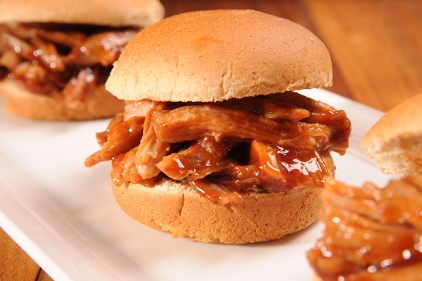
|
| OSI protein products include bacon, breakfast sausage, hot dogs and specialty sausage, cooked beef and pork, raw and fully processed chicken and fresh, frozen and cooked beef patties. |
|
Prepared Foods’ “Food for Thought” feature interview series involves food company R&D professionals, nutritionists, research chefs and other industry executives. In this edition, “Food for Thought” talks to executives at OSI Group LLC. For more than 55 years, OSI Group has been a leading global processor and supplier of value-added protein items and other food products to top foodservice and retail operators. It is a privately held corporation with more than 50 facilities in 17 countries. The company’s global headquarters is located outside of Chicago in Aurora, Ill. Prepared Foods spoke with Dr. B.K. Girdhar, vice president of product development, and Christopher Hansen, OSI’s corporate executive chef. Prepared Foods: Let’s start off with some fun and ask about a few of your own dining preferences. What’s a personal favorite from OSI’s product line? If we visit your home and look in the freezer or fridge, what might we find? B.K. Girdhar: We make a sous-vide pork product that is delicious. It is such a flavorful and versatile product. I put it in tacos, in salad, on crackers. Christopher Hansen: I also really enjoy our sous-vide products. Additionally, I really like a shaved steak item we produce, one made from whole-muscle cuts of beef. I can eat it for breakfast, lunch, dinner… anytime, really. PF: Looking back on the past year, what’s been one of your favorite new product projects? Why? Dr. Girdhar: We recently departed from our standard items and worked on a salad dressing for a customer. This is a completely different item from what we usually do but it shows our versatility and ability to work with a customer to give them what they need. The product is very unique, and unlike anything you would find in a grocery store. It is not a typical creamy product nor is it a typical oil/vinegar based product that would separate. It is somewhere in-between. That makes it unique and one of my favorites. Chef Christopher: We have a breakfast egg project in process that is quickly becoming a favorite. It is a culinary-driven item, from concept through to production, which makes it exciting for me to work on. PF: Okay. Let’s go from most fun to perhaps most frustrating. What was one of your most challenging projects? Why? Chef Christopher: Any project that involves rethermalization, or reheating, in the customer’s operation is challenging from the standpoint that we need to meet the customer’s criteria. Speed is of the essence for QSR operations, along with quality and food safety. Reheating a previously cooked item within a certain amount of time – usually under a minute – and maintaining the proper texture (like a crispy coating, for instance) and target finished temperature isn’t easy. PF: How did you resolve or address that particular challenge? Chef Christopher: As with any challenge we face, we generally work with our suppliers and the R&D teams of all involved to solve the issue. We discuss the key attributes of the end-product that need to be addressed, and come up with a solution. PF: Let’s talk about one of ways you solve problems. In 2011, OSI built and opened a new culinary innovation center in Aurora. It’s rare to have the opportunity to design and equip a new multi-million dollar facility. What features were important to you? Dr. Girdhar: Our “must-haves” included having all of the equipment that our customers’ restaurants have: flat grills, clamshells, special ovens and re-therm equipment. That is so we can duplicate their environment and test the conditions under which the customers operate. This way we know if our product is designed properly to meet their expectations. Chef Christopher: BK is right with what he said. I agree. Also, it was important for us to have a functional space for chefs to be creative. It’s not a lab environment. It is a kitchen and it is multi-functional. We incorporated a sensory room, a tasting and presentation room and even an area for photography. It all works well. PF: Can you share an example that demonstrates the benefits of the new center? Dr. Girdhar: This happens every day. The center beat all expectations when it first opened and it continues to do so. We have had—and continue to have—so many work sessions with customers’ R&D and marketing teams. In the center, we can come up with a concept and—in just an hour or two—we can have a prototype sample created. Then we can modify or fine-tune it right then and there. It speeds up the process a great deal. Chef Christopher: Hosting work sessions with key customers works extremely well here. When we’re working on a project, we are able to bring in local people, as well as those from abroad. We can use the center to have all the chefs and other team members involved to work on a project—all together in one space. Every time we do this, I am glad we have it! PF: OSI is certainly a diverse business across multiple product types and distribution channels. Can you talk about your average day and your average week? How do you allocate time? Dr. Girdhar: Regardless of what type of customer it may be, we prioritize projects based upon the customer’s needs and then execute against their expectations. Then we work against that list of priorities. Chef Christopher: It is all about priorities. We allocate our time based upon the benefit to the customer and to us and what will work best in the situation. |
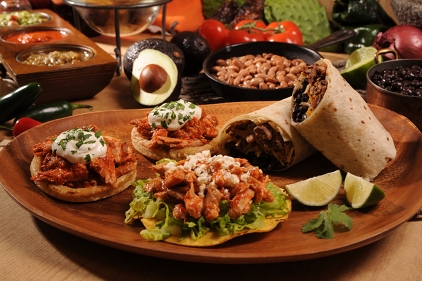 |
| Say Ole: OSI offers a wide range of specialty kettle and smoked further prepared products. |
|
PF: How about a recent example where you two were working closely together? Dr. Girdhar: Recently, Chef Chris and I responded to a customer request to reduce product cost with no compromise to taste or quality. He and I worked together with an ingredient supplier to provide us with a less expensive raw material ingredient. Together, we evaluated the revised product before we presented it to the customer. We understand we are both part of the same team at OSI. We work together very well. Chef Christopher: We also worked on a meatball project recently, to help define and implement the best product texture for the customer. We looked at how to use current assets to achieve the goal. We had to consider grinding capabilities and cooking methods to produce the optimum item. We both contributed to the solution. That is the typical approach for OSI: work as a team to get the job done. PF: Here’s a question for one or both of you. Can you share an insight about protecting product taste, flavor and/or texture through the manufacturing process? What’s been something you’ve learned – that works for your company – about communicating, coordinating with operations … to ensure that finished product standards meet your expectations? Dr. Girdhar: When we develop a product, we personally attend the first production run at the plant. The finished product is put through a strict sensory panel to be sure it meets expectations. We compare these first samples with the approved prototypes and make any adjustments that are necessary. We all work together—R&D, the plant’s QA department, the process group—to make sure that our product satisfies the customer. Chef Christopher: New products are always a team effort from the “get-go.” All areas of expertise are brought in from the start. I call it a “concept-to-carton” approach. That is just the way we operate and it works. PF: OSI is quite a global organization. Can you each talk about a recent new product project where you leveraged insights from your global counterparts? Dr. Girdhar: We are very global and that works to our advantage. Sharing ideas and processes is something we do often. We are currently testing a product that was developed in Germany, for instance, to see if it works in the U.S. market for the U.S. palate. Similarly, our counterparts in India reached out to us for help with development of a breakfast sausage that does not utilize pork. We helped them develop a formula for a chicken sausage that tasted great and had the right consistency. Chef Christopher: I head the global culinary council we have in place at OSI. It is always about exchanging information and keeping everyone in the loop about all of our activities, whether global or regional in nature. This helps us speed up the sales cycle and it accelerates new product development around the world by equipping our staff with as much information as we have available, regardless of where it originated. PF: It’s important to keep learning and growing in your field. Can you talk about one or two things you learned and applied during 2012? Dr. Girdhar: In 2012, I learned more about changing from chemical antioxidants to natural versions that work equally well and allow for a cleaner label. We are currently incorporating some of these changes according to our customers’ requests. Chef Christopher: Last year, I spent a lot of time working with the sous-vide technique. I learned more about it and how it can apply to different foods, from animal proteins all the way through to vegetables. It has such broad application. We have this asset in place to produce these types of items. Now we can now go about using it in a more sophisticated way. PF: If you could ask ingredient suppliers for one new type of product or process improvement in 2013, what would you want to see? Dr. Girdhar: I would like to see a good replacement for salt to address the need for lower sodium items, and have it offered at a reasonable price. Chef Christopher: I would like to see more products that can be described as “wholesome.” I want to see items that can deliver on expectations—but with a cleaner label. One example might be cures for meats that perform well without the use of nitrates. |
